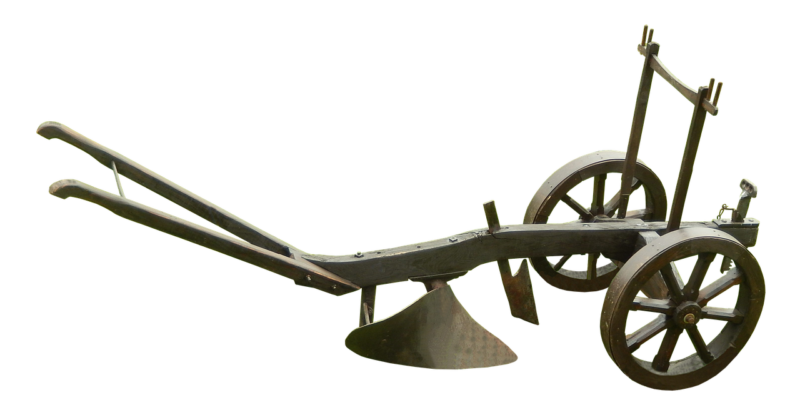The Invention of the Plow and Its Role in Agricultural Evolution
November 15, 2024

Agriculture has propelled human civilization from small, nomadic tribes to large urban societies over thousands of years. One of the critical innovations that revolutionized agriculture is the plow. In this article, we will dive deep into the history, evolution, and significant impact of the plow on agricultural practices and society as a whole.
1. The Origins of Agriculture
The journey of the plow begins with the origins of agriculture itself. Approximately 10,000 years ago, during the Neolithic period, humans transitioned from a hunter-gatherer way of life to settled farming communities. This shift was initiated in the Fertile Crescent, an area comprising modern-day Iraq, Syria, Lebanon, Israel, and Jordan.
Discoveries of ancient grains like wheat and barley point to the beginning of domestic agriculture. Early agricultural practices involved rudimentary techniques like hand-harvesting and the use of simple digging sticks. However, as populations grew, the necessity for improved farming methods became apparent to enhance food production.
2. The Emergence of the Plow
The first true plow is believed to have emerged around 3,000 BCE in the region of Mesopotamia. These early plows were primarily made of wood and featured a simple, pointed tip to break the ground. Unlike previous methods that relied on hand tools, the plow could turn over soil, creating furrows that allowed for better seed placement and ultimately higher crop yield.
The design of the plow evolved significantly over time. By the 2nd millennium BCE, the introduction of metal technology allowed for the production of stronger and more durable plow shares, enhancing the efficiency of this crucial tool.
The basic plow structure has remained a fundamental component of agricultural technology throughout history.
3. The Plow’s Impact on Agricultural Practices
The introduction of the plow changed the face of farming and had profound implications:
- Increased Productivity: The plow increased land cultivation speed and efficiency, allowing farmers to create longer, deeper furrows that could handle more seeds. This led to significant crop surpluses, thereby supporting larger populations and fostering urban development.
- Crop Rotation and Diversification: With plowing mechanisms in place, farmers began to experiment with different crops and crop rotation systems. This development was essential for maintaining soil health and ensuring consistent agricultural output throughout the year.
- Social and Economic Changes: The increased agricultural productivity enabled specialization of labor. This shift meant that not all members of a society were required to farm, which led to the rise of crafts, trade, and services. As food became more abundant, communities could sustain larger populations and create rich cultural frameworks.
Thus, the introduction of the plow played a pivotal role in transforming agricultural practices and, by extension, human society.
4. The Plow Across Cultures
The plow developed independently in various cultures around the world, adapting to the unique agricultural needs and practices of each region. Different versions of the plow emerged, such as:
- The Roman Plow: Known as the ‘aratrum’, the Roman version featured a wooden frame and an iron share for improved soil penetration and farming efficiency. This plow system allowed the Romans to expand agricultural production across their empire.
- The Indian Plow: Known as the ‘plough’ in Indian vernacular, it introduced the use of wooden planks for stronger soil turning and greater furrow depth, important for rice and wheat cultivation in India.
- The Chinese Plow: Ancient Chinese plows featured an iron share and often included a seed drill component. The innovation of this tool allowed for efficient planting and soil management regimes in densely populated agrarian societies.
The variations in plows across cultures demonstrated the adaptability of this invention in meeting local agricultural needs and facilitated global agricultural exchange over centuries.
5. Modern Advancements in Plow Technology
With the advent of the Industrial Revolution in the 18th and 19th centuries, agricultural technology experienced dramatic transformations.
Today, we have advanced machinery, such as:
- Tractors: Modern tractors have far surpassed the capabilities of the traditional plow, as they can efficiently perform multiple agricultural tasks such as plowing, sowing, and harvesting all in one machine. This automation has further increased productivity and reduced the physical toil on farmers.
- GPS and Precision Agriculture: Today’s technology leverages GPS systems to optimize farming decisions, including the creation of precise plowing patterns that reduce soil erosion and minimize waste. This allows for a smarter approach to agricultural practices, adapting to environmental variables effectively.
- Conservation Tillage Practices: These modern practices focus on minimal soil disturbance, using technology like no-till plows that help preserve soil structure and improve environmental sustainability.
As we forge ahead, the innovations surrounding plow technology continue to enhance agricultural efficiency, ensuring the future of food security.
Conclusion
The invention of the plow has left an indelible mark on human history. It transformed agriculture from simple hand-based techniques to modern mechanization, dramatically altering the trajectory of civilization. By fostering population growth, social organization, and economic prosperity, the plow allowed societies to flourish and innovate.
As we continue to evolve in agricultural practices, the legacy of the plow serves as a testament to human ingenuity and the capacity to adapt technologies for sustainable growth in food production. Agriculture remains the backbone of societies worldwide, and understanding its evolution allows us to appreciate the tools that make our modern lives possible.







